Acacia Tree Varieties & Species
The diverse world of Acacias has more than a thousand varieties. Among the most common acacias are Australian and Asian types. Other varieties include, African acacia, American acacia, etc. You may also classify them as thorny & thornless varieties.
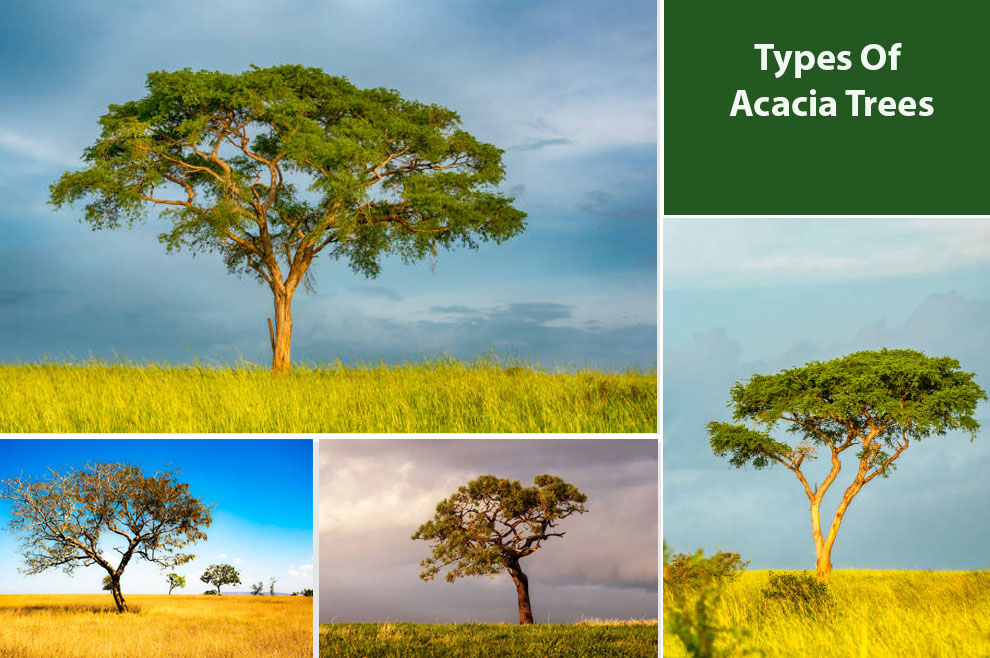
Acacia trees encompass a staggering array of more than 1300 different varieties and species globally.
Amongst these, approximately 1,000 types of Acacia trees trace their origins to Australia. But in 2005, a reclassification resulted in some species finding new homes within the four alternative genera.
This extensive flora family also thrives in regions across Asia, Europe, Africa, South America, and North America, depicting its global presence and phenomenal adaptability.
The categorization of the diverse Acacia tree varieties involves a nuanced process, grouping them based on physical traits, shared characteristics, or growing regions like Asian, Australian, African, American, etc.
Understanding this classification offers a foundation for exploring the vast tapestry of the Acacia plants, shedding light on their geographical distributions and distinctive features.
Below, we will take you through some top varieties under the Acacia group. Let us address them one by one.
Acacia Species Identification
| Acacia common name | Acacia or Wattles |
| Bark | Varies (smooth, rough, fissured, warty; color varies) |
| Acacia tree leaves | Compound, small, feathery or fern-like |
| Height & Spread | Varies widely depending on species (from shrubs to tall trees) |
| Blooms & Fruits | Distinctive pom-pom-like flowers |
| Acacia tree roots | Taproots |
Acacia trees, with a staggering diversity of more than 1300 varieties and species, are found across the globe.
Native primarily to Australia, where approximately 1,000 variants thrive, these trees have successfully established themselves in continents ranging from Europe, Africa, Asia, South America, and North America.
Their adaptability to diverse ecosystems and climates is a testament to their resilience. The distinct features unite the Acacia genus. Notably, several species have thorns, a protective adaptation against herbivores.
Another distinguishing attribute is their compound leaves, comprising multiple leaflets annexed to a central stem. This intricate leaf structure accentuates their capacity for efficient photosynthesis and facilitates their survival in varied habitats.
Furthermore, Acacia trees typically bear aromatic, petite flowers arranged in captivating clusters, further amplifying their visual allure.
These shared attributes offer a framework for recognizing and appreciating the variety of Acacias, underscoring their cultural significance and vital ecological roles globally.
Different Types of Acacia Trees
Other Acacia Varieties
Below, we will take you through the different geographical and characteristic distributions of Acacia varieties, offering an insight into their rich ecological significance and diversity.
1. Australian Acacias
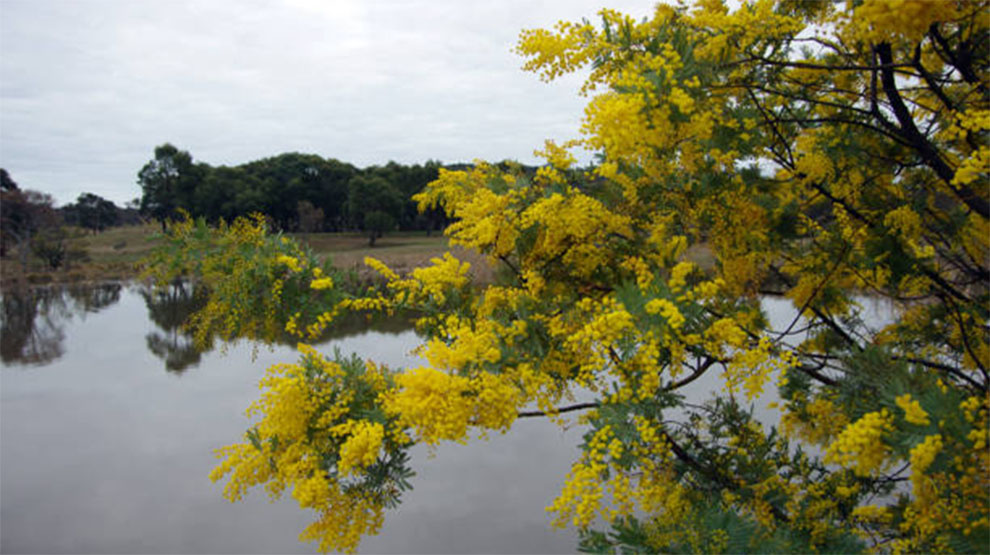
Australian Acacias, a diverse group of shrubs and trees, constitute a significant portion of the continent’s flora.
With more than 1000 native species, the Australian Acacias have a crucial ecological role. Their distinctive features comprise pinnate leaves, typically with phyllodes over true leaves.
Many Australian Acacia trees have spherical, showy flower heads, ranging from golden yellows to creamy whites.
Acacias can thrive in several habitats, ranging from lush rainforests to arid desserts, depicting their remarkable adaptability. Their nitrogen-fixing ability enriches the soil, making them an imperative component of Australia’s unique ecosystem.
A. Acacia pycnantha (Golden Wattle)
Commonly called the Golden Wattle, Acacia pycnantha is Australia’s floral emblem. It features fern-like bipinnate leaves with bright golden flower clusters that adorn the tree in late winter to early spring.
Native to South Eastern Australia, Acacia Pycnantha thrives in grassy plains and open woodlands. Its vibrant blooms and distinctive foliage make it a cherished symbol of the Australian national identity.
B. Acacia melanoxylon (Blackwood)
Also called the Blackwood, Acacia melanoxylon is a prominent Australian tree boasting fissured, dark brown bark and feathery, bipinnate leaves. These Acacia trees can grow to 45 meters, with a spread of 15 meters.
Their cylindrical pods and cream-colored flower spikes add to their visual appeal. Indigenous to South Eastern Australia, Acacia Melanoxylon thrives in wetter regions, making them a vital component of the local ecosystem.
Further, its timber is highly valued and loved for its versatility and quality.
C. Acacia victoriae (Prickly Moses)
Acacia victoriae, commonly known as Prickly Moses, is one of the distinctive Acacia tree varieties. It features fissured, rough bark and bipinnate leaves with a prickly texture. This adaptable shrub can grow up to five meters.
Prickly Mosses yield pale yellow, spherical flower heads and slender pods. These can thrive in different habitats across Southern Australia, including woodlands and arid regions.
It can flourish, and its resilience in changing environments makes it a valuable inclusion in the Australian landscape.
D. Acacia mearnsii (Black Wattle)
Commonly called the Black Wattle, the Acacia mearnsii is a notable Australian tree, recognized by its feathery, bipinnate leaves and dark brown, fissured bark.
These can grow up to 30 meters with a 15-meter spread. Its creamy-yellow flower spikes and cylindrical pods add to its aesthetic appeal.
They are native to South Eastern Australia and thrive in varying habitats, from open woodlands to moist valleys.
Its ecological significance and adaptability make it a valuable component of Australia’s natural ecosystem. Further, its timber is employed for different purposes.
E. Acacia dealbata (Silver Wattle)
It is an iconic Australian tree characterized by light gray and smooth bark with silvery-blue bipinnate leaves. These grow up to 15 meters and have an 8-meter spread.
Their creamy-white spherical flower clusters and flat pods make them visually appealing. Indigenous to South Eastern Australia. The Acacia dealbata thrives in varying habitats, from mountain ranges to wet forests.
The Silver Wattle’s adaptability and striking appearance make them a cherished component of Australia’s natural landscapes.
F. Acacia longifolia (Sydney Golden Wattle)
These Australian Acacia species feature dark grey, fissured bark, and fern-like, bipinnate leaves. They can grow up to eight meters with a six-meter spread.
Their spherical, bright yellow flower clusters and slender pods add to their visual allure. These thrive in different habitats, from open woodlands to coastal dunes.
Acacia longifolia’s adaptability and striking appearance make them a cherished component in the landscape.
2. Asian Acacia Trees
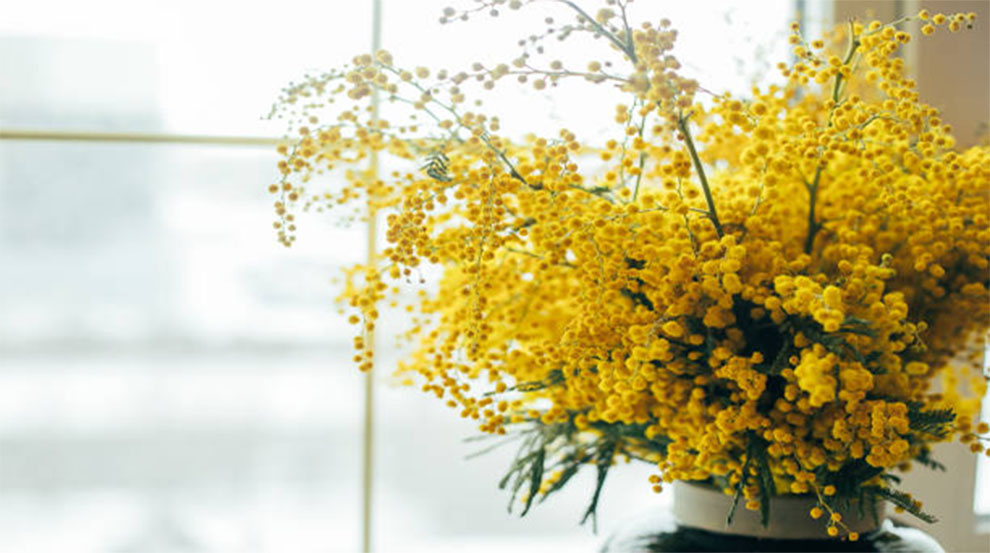
Asian Acacias encompass a diverse species from the Acacia genus, different from their Australian counterparts. These shrubs and trees thrive typically in areas across Asia, offering a unique tapestry to explore.
Asian Acacias comprise a distinct range of characteristics, from finely pinnate leaves to an array of beautifully colored blooms, adding to their cultural importance and ecological significance.
You can find Asian Acacias in varying habitats, from lush tropical rainforests to arid deserts, highlighting their adaptability.
Beyond their ecological roles, Asian Acacias often hold economic and cultural value, with some species prized for their ornamental beauty, medicinal properties, and timber.
Amongst the different types of Acacia trees under this variety, the four most prevalently encountered species that stand out for their regional prevalence and distinct characteristics include:
A. Acacia auriculiformis (Earleaf Acacia)
Known for its ear-shaped, distinctive phyllodes, this species is native to Southeast Asia and boasts a tall stature. Acacia auriculiformis can adapt to different environments, making them a valuable species in reforestation efforts.
B. Acacia concinna (Soap Pod)
Native to the Indian subcontinent, this species is known for its pod-like fruits comprising saponins, commonly employed in traditional hair care products. It features bipinnate leaves and is valued for its medicinal properties.
C. Acacia catechu (Black Catechu)
Native to South Asia, especially Sri Lanka and India, Acacia catechu is notable for its dark heartwood. It is used as a dye and in traditional medicine. It has pale-yellow flowers and bipinnate leaves.
D. Acacia mangium (Black Wattle)
Native to tropical Australia and Asia, this species is prized for its top-quality wood and fast growth. It features bipinnate leaves and can reach impressive heights.
Other Acacia tree varieties under this category are Acacia pennata, Acacia leucophloea, Acacia sinuata, Acacia torta, Acacia suma, and Acacia arabica, each contributing to the rich diversity of Acacia trees in Asia.
3. African Acacia Variety
African Acacias comprise several trees across the continents, known for their adaptability to different landscapes. With more than 500 species, they play a crucial role in the African ecosystem.
These trees typically depict finely pinnate, feathery leaves and can range from towering giants to small shrubs. Some species, like the Acacia tortilis, exhibit distinctive twisted thorns.
These varieties are known for their flat-topped iconic canopies, a prevalent sight in grasslands and savannas. They offer crucial sustenance to the wildlife via their nutritious pods.
Further, their hardy wood and bark have economic and cultural significance. They are employed in traditional medicine, crafts, and construction in several African communities.
Amongst different acacias under this head, the four most widely encountered species noted for their regional prevalence and distinctive characteristics include:
A. Acacia nilotica (Gum Arabic Tree)
Native to the Nile Valley and popular across Africa, this species is famous for its umbrella-shaped, dense canopy and small, pale-yellow flowers. It yields valuable gum Arabic, employed in different industries.
B. Acacia tortilis (Umbrella Thorn)
Iconic in the African Savannas, the Acacia tortilis species is known for its umbrella-like canopy formed by twisted branches. It thrives in arid regions and offers crucial foliage for wildlife.
C. Acacia senegal (Gum Arabic Acacia)
Found in Africa’s Sahel region, these types of Acacia trees are vital for gum production. They have pinnate, delicate leaves and clusters of creamy-white flowers.
D. Acacia karroo (Sweet Thorn)
Widely distributed across Southern Africa, this species is known for its robust growth and nutritious sweet pods. It has compound leaves and distinctive hooked thorns.
Some other African Acacia varieties include Acacia gerrardii, Acacia erioloba, Acacia xanthophloea, Acacia sieberiana, Acacia caffra, and Acacia mellifera, each contributing to the diverse and ecologically significant Acacia genus in Africa.
4. American Acacias
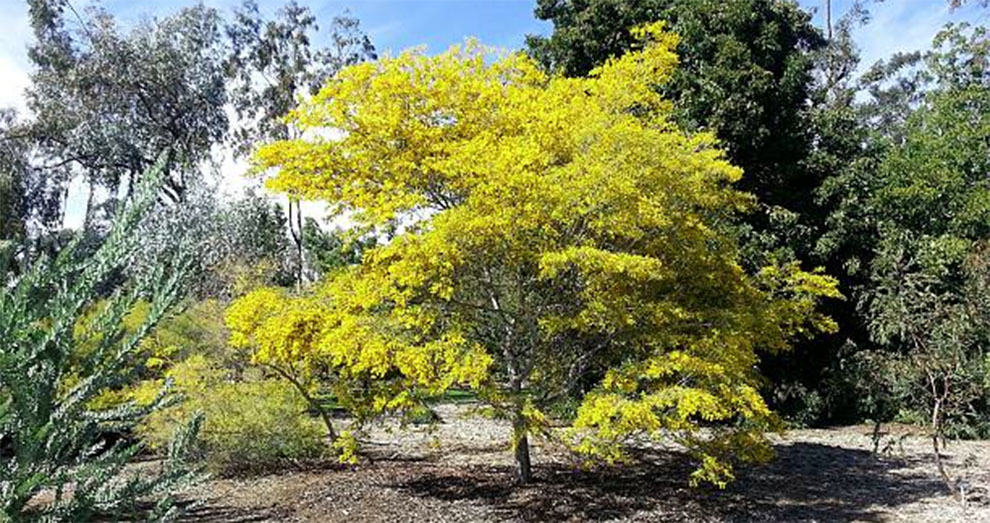
Though less diverse than its counterparts in Africa and Australia, the American Acacias play a crucial role in the Americas ecosystem. These add to the region’s biodiversity, offering sustenance and habitat for wildlife.
Some American Acacias, like the Sweet Acacia, are valued for aromatic blooms. American Acacias also serve as a vital component in reforestation efforts and contribute to America’s economic landscape and cultural abundance.
Some renowned American Acacia varieties that stand out for their regional prevalence and distinct characteristics are:
A. Acacia berlandieri (Guajillo)
Found in Northern Mexico and Southwestern United States, these Acacia trees feature small, spherical flower heads and finely pinnate leaves. They are known for their aromatic resin and spiny branches.
B. Acacia greggii (Catclaw Acacia)
Thriving in arid regions of Northern Mexico and the Southwestern United States, this species is known for its finely pinnate leaves and hooked thorns. It yields clusters of small, yellow flowers.
C. Acacia farnesiana (Sweet Acacia)
Native to parts of South and Central America and the Southern United States, the Acacia Farnesiana is known for its pale-yellow, fragrant flowers and bipinnate, dark-green leaves. It has a sweet, distinctive scent.
D. Acacia constricta (Whitethorn Acacia)
Native to Mexico and the arid regions of the Southwestern United States, this species has whitish, twisted thorns and finely pinnate leaves. It produces yellow, small flower clusters.
Other American species include Acacia koa, Acacia cultriformis, Acacia stenophylla, Acacia salicina, Acacia smallii, and Acacia roemeriana, each adding to America’s botanical diversity.
Related: Types of Honey Locust Trees
Other Acacia Tree Varieties
Apart from their geographical classification, you can also categorize Acacia into Thorny, Thornless, and some other unique varieties.
a. Thorny Acacia Varieties
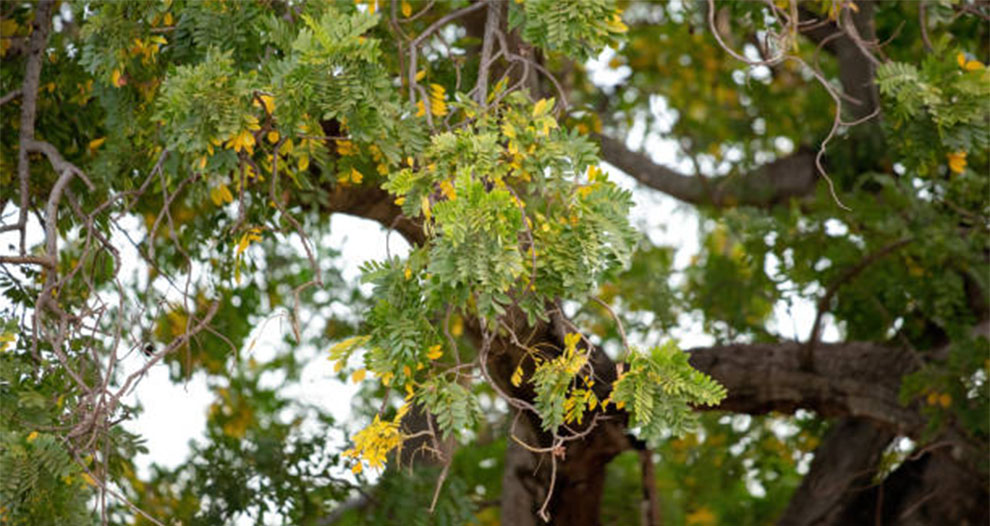
These adaptations enable them to thrive in challenging environments, typically in arid regions. The thorns also have a crucial role in their ecological interactions, shaping the ecosystems’ dynamics.
Despite their prickly exteriors, Thorny Acacia species contribute to local biodiversity and exemplify nature’s ingenuity in survival and adaptation.
The most common species of Thorny Acacia include:
- Acacia Senegal
- Acacia Nilotica
- Acacia Karroo
We have already discussed them under African Acacias.
b. Thornless Acacia Varieties
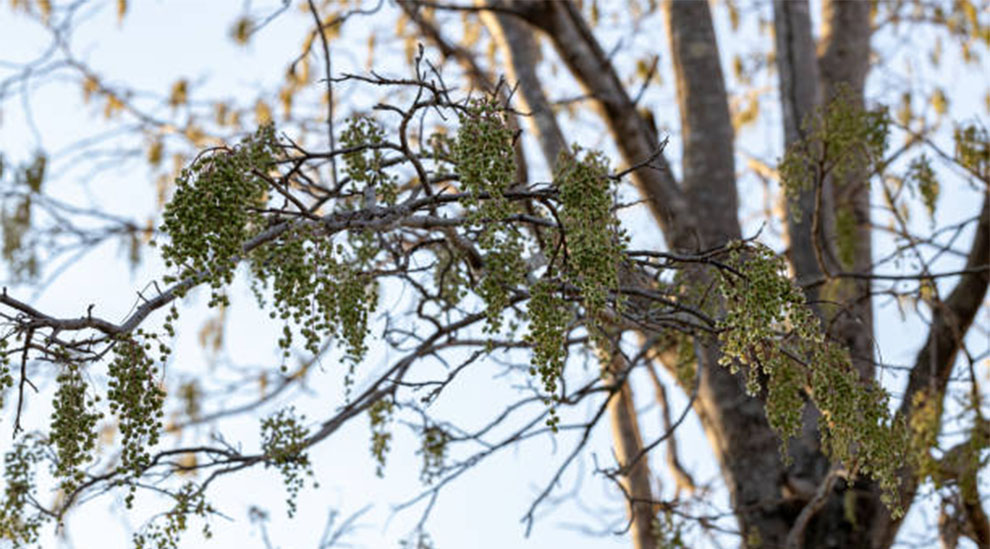
Thronless Acacia varieties, distinguished by the absence of their formidable thorns, offer a beautiful contrast to their spiky counterparts.
Thornless types of Acacia trees like Acacia koa and Acacia mangium depict smooth branches and come bereft of the protective structures found in other Acacias.
This trait accentuates their accessibility and makes them suitable for different applications, such as landscaping and timber production.
These can thrive in different environments, contributing to their popularity and versatility in cultivated and natural settings. Their adaptability and aesthetic appeal make them valued components of the diverse ecosystems globally.
The most common species under this category include:
1. Acacia Catechu: The Catechu Extract Producer – An Asian Acacia
2. Acacia Dealbata: The Mimosa Tree – An Australian Acacia
3. Acacia Baileyana: The Fern-like Mimosa is a striking tree known for its feathery and delicate foliage. Native to eastern Australia, Acacia Baileyana has bipinnate leaves reminiscent of fern fronds, giving it an ornamental and distinctive appearance.
Its golden-yellow, fragrant flowers accentuate its visual appeal. This species has become popular in landscaping, adding a touch of elegance to parks and gardens worldwide.
c. Unique and Unusual Acacia Species
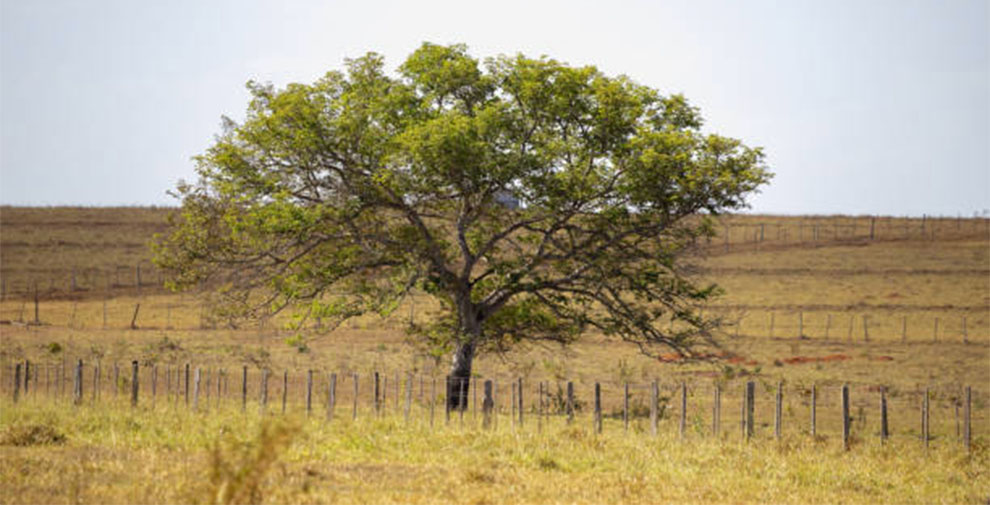
These offer a fascinating glimpse into the spectacular diversity of the genus. These peculiar variations challenge the conventional expectations, underscoring Acacias’ adaptability and versatility across different environments and ecosystems.
The most common species under this category include:
1. Acacia Koa – Hawaii’s Prized Timber Tree: Native to Hawaii, the Acacia Koa is revered for its richly colored, fine timber. It is employed in traditional Hawaiian crafts, furniture, and construction. The tree’s fern-like, broad leaves add to its allure in tropical landscapes.
2. Acacia Podalyriifolia – The Queensland Silver Wattle: Native to eastern Australia, Acacia Podalyriifolia has a striking silvery-blue foliage. It showcases ornamental qualities, making it a spectacular choice in parks and gardens. Its clusters of golden-yellow flowers accentuate its visual appeal.
3. Acacia Armata – The Kangaroo Thorn: Endemic to Australia, Acacia Armata gets its name from its thorn-like, sharp phyllodes. It is a winter hardy species vital for stabilizing the sand dunes. Acacia Armata is a valuable source of forage for local wildlife, especially kangaroos.
